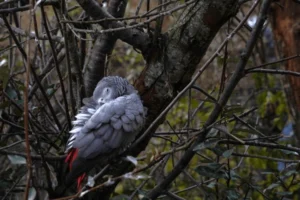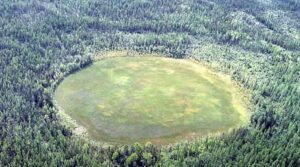
In a country known for its rolling hills, misty woodlands, and modest wildflowers, one recent botanical surprise has captivated scientists and nature lovers alike: the giant orchid UK. This remarkable species, native to the sun-soaked landscapes of the Mediterranean, has made an unexpected appearance in southern England, growing not just sporadically—but with impressive vigor and size.
Standing taller than most of Britain’s native wild orchids, the giant orchid UK reached nearly a metre in height when it first flowered near Oxfordshire. Experts and amateur botanists alike were stunned by this development, not only due to the orchid’s beauty but also because its presence in British soil challenges long-held assumptions about native flora and the shifting boundaries of plant habitats in a warming world.
Its discovery was more than a charming anomaly. It symbolized something larger: a turning point in how we understand plant migration, climate change, and biodiversity in the United Kingdom.
🌱 What exactly is the giant orchid UK?
The name “giant orchid UK” isn’t just poetic. It refers specifically to a plant called Himantoglossum robertianum, a species typically found in southern Europe, including Spain, Greece, and parts of North Africa. It belongs to the family Orchidaceae, which is one of the largest and most diverse plant families in the world.
Unlike Britain’s traditional orchids—such as the bee orchid or the early purple orchid—the giant orchid UK is not discreet or easily overlooked. It boasts robust stalks, lush green leaves, and clusters of purplish-pink flowers with deeply lobed petals. Its imposing stature makes it look more like a tropical transplant than a typical wildflower from the English countryside.
Botanists have been tracking the slow northward spread of this orchid over the past few decades, observing its arrival in northern France and even parts of the Low Countries. But its sudden, healthy appearance in the UK in recent years has sparked fresh interest and questions about its long-term viability.
🌍 How did this Mediterranean orchid arrive in the UK?
One might assume that such an exotic-looking plant must have been planted deliberately, perhaps in someone’s garden. But evidence suggests that the seeds of the giant orchid UK may have arrived naturally or with minimal human intervention. Orchid seeds are microscopic and incredibly light—capable of traveling long distances by wind or animal transport.
Still, some botanists believe its presence may also be linked to past horticultural experiments. It’s possible that seeds were scattered a decade or more ago in attempts to study or introduce hardy orchid species in new environments. That, coupled with warmer winters and longer growing seasons, may have given the orchid the conditions it needed to take root.
Interestingly, these findings align with broader ecological patterns: many southern species of plants and insects are gradually moving north as the climate warms. The success of the giant orchid UK in adapting to the British climate could be a signal of what’s to come for other Mediterranean flora in the future.
🌦️ Climate change and the flowering of the giant orchid UK
One of the most critical factors behind the orchid’s success is Britain’s changing climate. Over the last 20 years, average winter temperatures in southern England have increased noticeably. While still cooler than the Mediterranean, the region now experiences fewer hard frosts and longer growing periods—conditions that favor orchids like H. robertianum.
Typically, the giant orchid blooms in late winter or early spring in its native habitat. In Britain, it has adapted to flower a bit later—usually around March or April. The fact that it can adjust its flowering cycle suggests a high level of ecological flexibility.
Some scientists see the orchid as a kind of bio-indicator: a plant whose health and presence reflect larger environmental trends. If the giant orchid UK continues to thrive and spread, it may offer insights into how British ecosystems will evolve over the next 50 years.

🐝 Ecological role and pollination strategies
The giant orchid UK is more than just a pretty face. Orchids, in general, are famous for their complex relationships with pollinators. Some mimic insects or emit specific scents to attract bees, flies, or beetles. The giant orchid relies on early-season pollinators like solitary bees and hoverflies, which are already active by the time it blooms.
In British meadows, where pollinators often struggle to find food sources early in the year, the orchid could provide much-needed nectar and pollen. This mutualistic relationship benefits both the plant and its local insect allies.
That said, there are concerns about ecological balance. Introducing a new species—no matter how beneficial it seems—can have unforeseen ripple effects. Will it outcompete native orchids? Might it cross-breed with similar species and change their genetics? These questions remain open and are the focus of ongoing research.
🗺️ Where has the giant orchid UK been found?
The Didcot discovery
The first confirmed sighting of the giant orchid UK occurred in 2022 on a chalky slope in Oxfordshire. It was spotted by Hamza Nobes, who initially mistook it for another plant. When he returned and saw it in full bloom, he realized it was something entirely unexpected. The site, located near Didcot, remains undisclosed to the public to prevent trampling or unauthorized picking.
Possible future habitats
Experts believe that other parts of southern England—particularly areas with calcareous (chalky) soil, like the Chiltern Hills and parts of the South Downs—may soon see similar blooms. Gardeners and nature watchers are now being encouraged to keep their eyes open and report any unusual sightings.
The presence of the giant orchid UK may soon become more widespread, particularly in regions with low tree cover, good sun exposure, and well-drained soils.
🌼 How does it compare to native orchids?
Britain is home to more than 50 species of native orchid, many of which are under threat. The giant orchid UK brings a new dimension to this botanical landscape—both in size and potential impact.
Native rivals
-
Early purple orchid: A small spring bloomer that thrives in shaded woodlands.
-
Bee orchid: Famous for its flower’s mimicry of a female bee.
-
Lady’s-slipper orchid: Once thought extinct in the UK, now carefully reintroduced and monitored.
Compared to these, the giant orchid UK is larger, earlier to flower, and better suited to open grasslands. If it spreads too rapidly, it may crowd out some of the more delicate native species, particularly in unmanaged spaces.
🧪 Conservation and scientific interest
Who’s monitoring it?
Organizations like the Royal Horticultural Society (RHS) and Plantlife UK have begun tracking the spread of the giant orchid UK. Botanists and citizen scientists are helping to collect data, monitor soil quality, and study the long-term effects on biodiversity.
Legal protection and risks
All wild orchids in Britain, including newcomers like H. robertianum, are protected under the Wildlife and Countryside Act. This means it is illegal to dig them up or disturb their habitats. Any conservation effort must balance interest and protection.
🌸 Seeing the giant orchid UK in the wild
For the average nature lover, spotting this rare plant is a thrill. While its current locations remain limited and often secret, orchid enthusiasts recommend joining local nature societies for updates, guided walks, and conservation activities.
The giant orchid UK is best observed in spring, usually from late March to early May. Remember to take photos, not flowers—and report your sighting to botanical societies to help the species’ future.
🧭 Where to find the giant orchid UK in the future
Areas with similar soil and sun exposure to southern Europe are key. Look for:
-
Chalk grasslands
-
Undisturbed south-facing slopes
-
Warm microclimates in southern England
These zones may offer the perfect home for the orchid’s expansion.
🧾 FAQ
Q1: Is the giant orchid UK native to Britain?
No. It’s originally from the Mediterranean but has recently been found growing wild in Britain.
Q2: Can I grow the orchid at home?
Only with special permits. Removing or transplanting wild orchids is illegal in the UK.
Q3: What pollinators does it attract?
Mainly bees and hoverflies active in early spring.
Q4: Is it invasive?
Not currently, but researchers are watching it closely to ensure it doesn’t harm native flora.
Q5: What does it look like?
Tall green stalks, dense flower clusters with purple-pink tones, and a distinct rosette of basal leaves.








